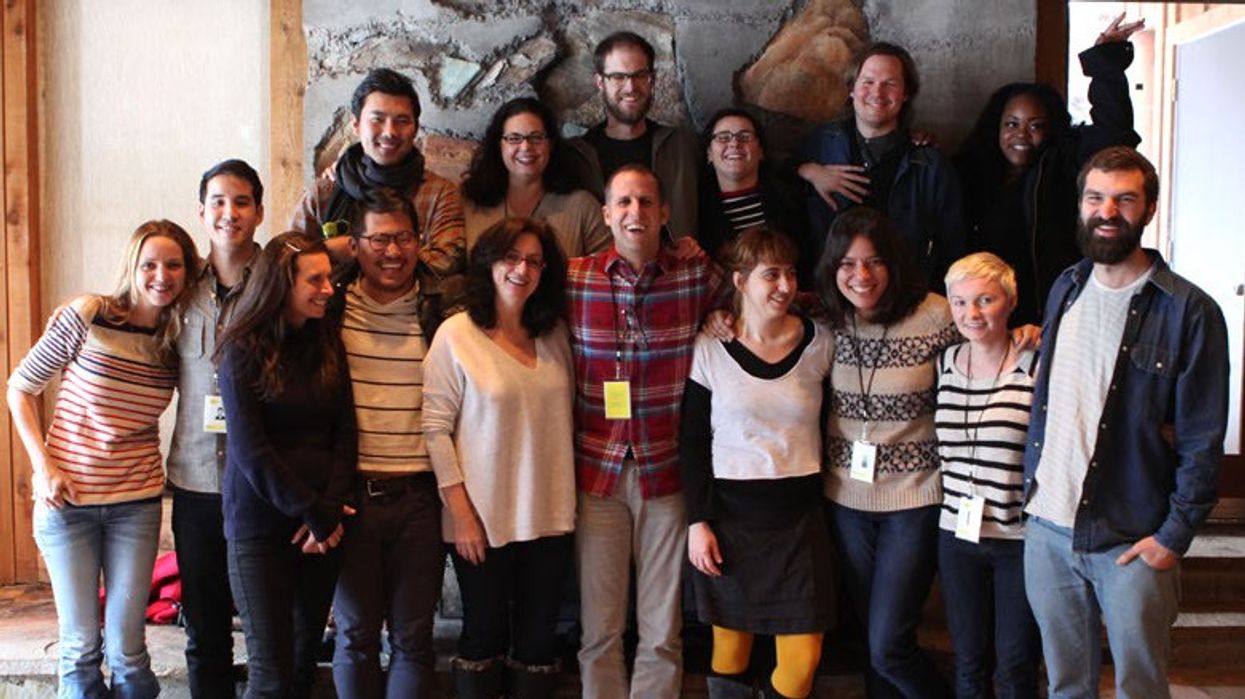10 Takeaways from the (Life-Changing!) Sundance Screenwriters Lab

It takes a village to make an independent film, and there are few villages as important and supportive as the Sundance Institute. If you don’t know the institute and its programs, you certainly know the films that exist because of the Institute’s immeasurable support. Previously I shared how I got into the Sundance Screenwriters Lab, and speculated about why I was fortunate enough to be selected this year after not making it in the past (hint: make a short – regardless of the labs, so many of this year’s festival features were adapted from shorts). Now that the lab and the festival are over, I’d like to share some things I learned at the life-changing (and I don’t use that term lightly) Sundance Screenwriters Lab.
First I'd like to thank the A3 Foundation for making me their inaugural Sundance Fellow, and second I'd like to thank the other fellows (pictured above) in addition to the amazing and generous advisors and staff! “What, exactly, is the lab?” is a common question, and thankfully there’s a brand new video that defines the lab experience much better than I can describe it. At this year’s festival (Sundance’s 30th anniversary) the Institute released this video, which gives a great overview of the Feature Film Program Labs:
The lab is a private, safe place, and “what happens there, stays there” (but in a non-salacious, completely opposite way from how they mean it in the Las Vegas commercials). Therefore I’m not going to write about specific quotes from the advisors, or the specific changes I’m making to my own script. But I do want to share some general takeaways that apply more universally to writing: notes I jotted down during Q&As, advice I received from advisors, conversations that took place over meals, words spoken during round tables, nuggets of wisdom I received from Sundance staffers, and ideas shared among fellows after hours.
Takeaways from the Sundance Lab
- Write from the heart out.
- Find your joy in the material!
- Audiences always respond to something done for pure purpose, and stories that move us emotionally.
- You have to write two endings — the ending that comes to pass, and the ending that could be. Therefore the audience is wondering throughout, “what kind of movie is this?”
- Your project should take you out of your comfort zone. What is it about the story, the characters, the themes, that make you uncomfortable?
- Make sure you’re always using a gray palette — take one lego block from one character and put it in the other.
- Wherever you are, think about what your protagonist would be doing and feeling. Let him or her live outside the screenplay, and insert your characters into your real life.
- Your act breaks are the least of your concerns. Only in passing did I ever talk about structure with an advisor – anyone can read a screenwriting book and come up with three acts, or fifteen beats, but good structure is not going to be the thing that makes your story unique.
- Write down, in a couple of sentences, what you want the audience to feel coming out of your film. What is your statement about what you want to accomplish with this film? Really get that down. Then as you go through the script, ask yourself about each scene — does this accomplish or contribute to that overall goal? If not, it goes.
- This final one is an instructive quote that resurfaced in my head during the lab. As William Faulkner said in his inspiring 1949 Nobel Prize acceptance speech (the audio of the speech is embedded below), “the problems of the human heart in conflict with itself … only that is worth writing about.” The human heart. In conflict with itself.
How the Lab changed my life

This is possible for reasons that have less to do with who I am in particular, and everything to do with the particular environment of the lab, as cultivated by Michelle, Ilyse, Anne, Shira, Paul, Matthew, Cristen, Laura, Rebecca, and others -- not to mention the vision of Robert Redford. You won’t see any YouTube uploads from the Lab, any selfies with Redford (“Bob”) on Instagram, any salacious quotes from Quentin Tarantino on Twitter. The Lab is a private place for writers to share their motivations, their inspirations, and their struggles – and such vulnerability, from advisors, fellows, and staff alike, is only possible when it’s being shared in a warm, supportive, family environment.

Note: I did not do a very good job of actually describing the configuration of the lab, so for more on the lab in general, and this year’s experience in particular, please see this great post by my fellow… well, fellow, Nicole Riegel, and this great post by advisor Bill Wheeler. If you have any other questions about the lab I’ll do my best to answer them in the comments!











